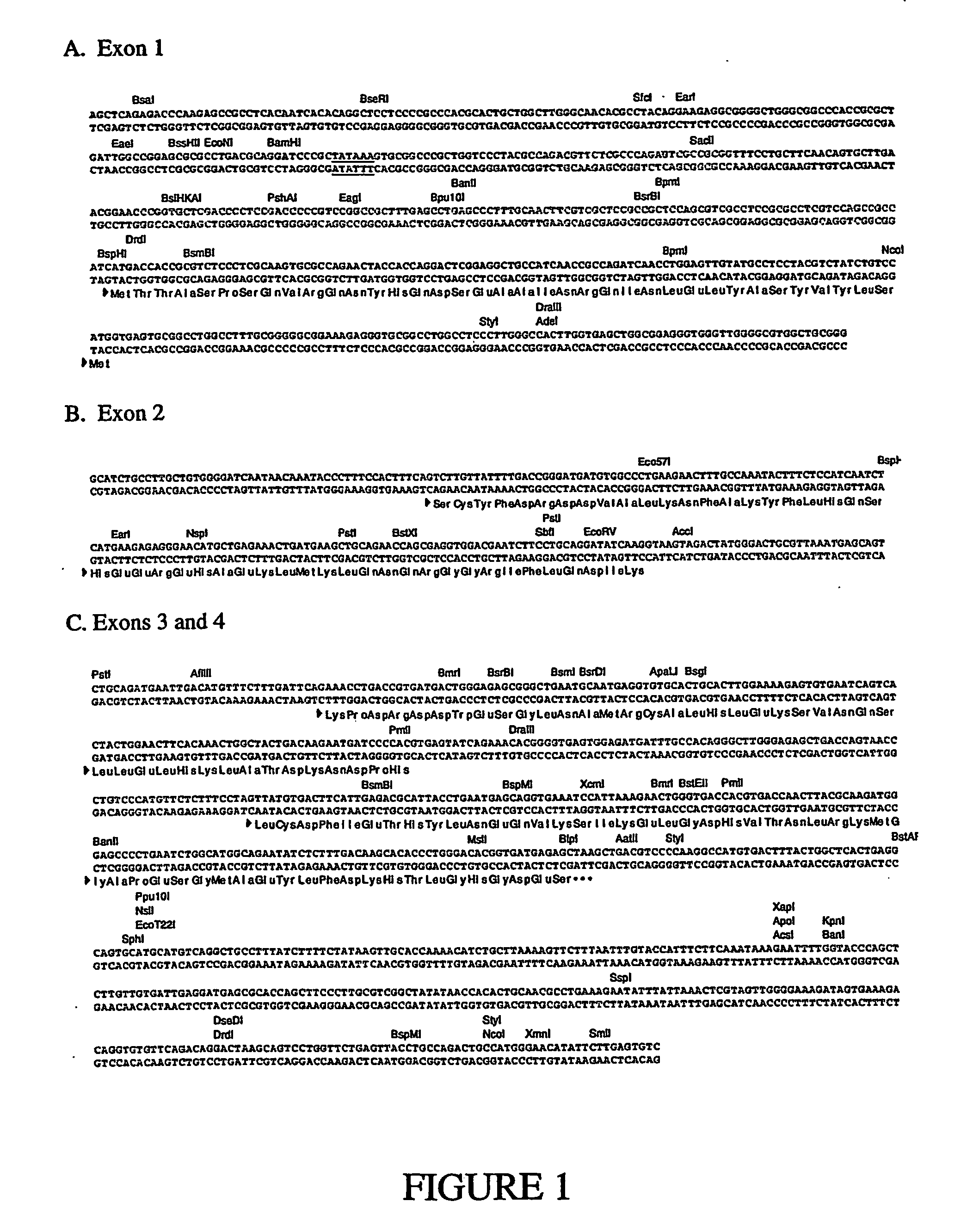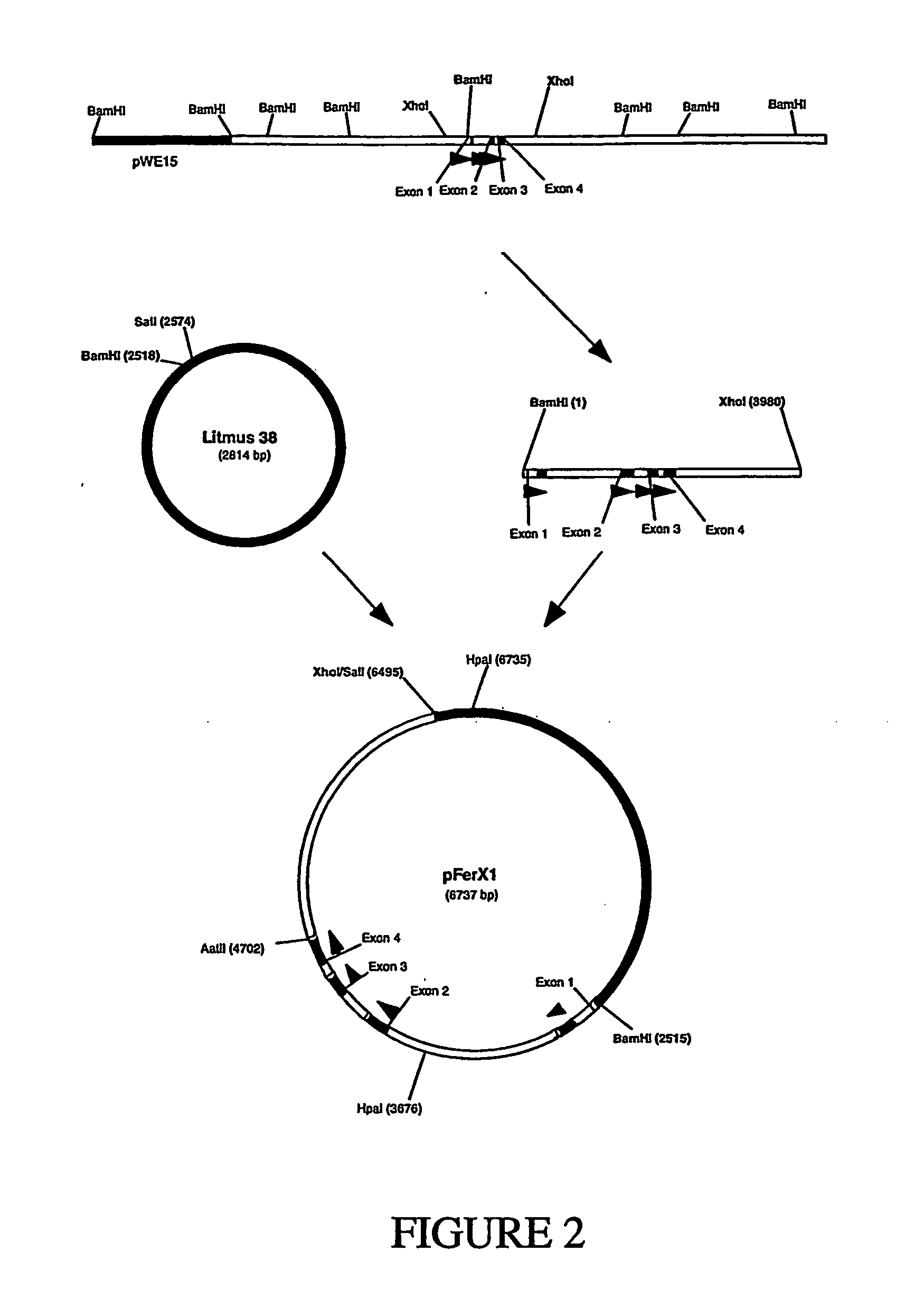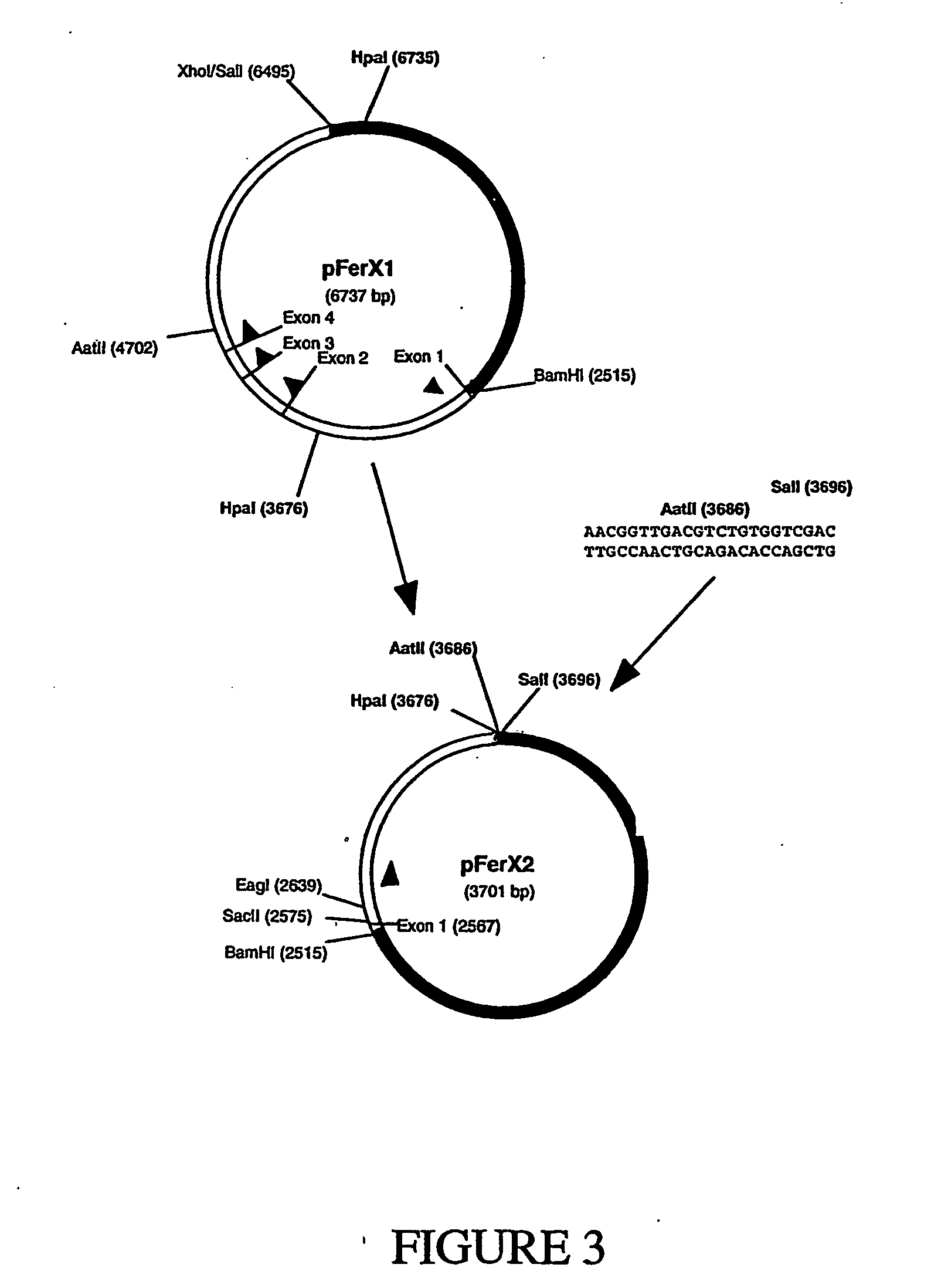High expression locus vector based on ferritin heavy chain gene locus
a technology of ferritin and heavy chain, applied in the field of molecular biology, can solve the problems of insufficient expression levels of transfectants obtained using standard expression vectors, expression constructs that are not always able to confer a similar level of expression, and achieve high expression levels. , the effect of high expression levels
- Summary
- Abstract
- Description
- Claims
- Application Information
AI Technical Summary
Benefits of technology
Problems solved by technology
Method used
Image
Examples
example 1
Creation of a Ferritin Heavy Chain Locus Vector.
[0082] In order to generate a high expression locus vector based on the ferritin heavy chain gene, three phases of development were employed: (1) cloning of a ferritin heavy chain gene with substantial 5′ and 3′ regions; (2) production of an expression vector based on at least one of these gene regions, and (3) optimization of the vector. As noted above, many other approaches could have been employed to produce the same or equivalent locus vectors.
[0083] First, the region containing the ferritin heavy chain exons from cosmid 15A was subcloned into the Litmus 38 vector (New England Biolabs) to generate plasmid pFerX1 (FIG. 2). The BamHI-XhoI fragment was isolated from cosmid 15A and ligated into Litmus 38 digested with BamHI and SalI to generate plasmid pFerX1. Note that cosmid 15A was only partially sequenced and that some of the restriction site locations are based on restriction mapping. Therefore, some of the restriction site loc...
example 2
Expression of Heterologous Sequences.
[0099] A. Reoorter Gene
[0100] A reporter gene was inserted into the SwaI-NotI sites in the polylinker of both the pFerX8 and pFerX9 plasmids. Secreted alkaline phosphatase (SEAP) was selected as a reporter gene because the commercially available assay (Clontech, Palo Alto, Calif.) for the product is simple and rapid. The expression vectors were designated pFerX8SEAP and pFerX9SEAP.
[0101] The sequence of the vector polylinker and the original sequence at the 5′ end of exon 2 that needs to be recreated to regenerate the splice donor are shown in FIG. 5. Thus, the 5′ primer should include a CAG at the 5′ end to recreate the natural 20 splice donor followed by the coding region starting with the second amino acid (the ATG is already included in exon 1). The 5′ end of the PCR product should be left blunt-ended for ligation with the SwaI site. For example:
[0102] General 5′ primer:
CAG NNN NNN NNN NNN NNN NNN NNN AA2 AA3 AA4 AA5 AA6 AA7 AA8
[010...
example 3
Reduction of Vector Size.
[0129] In order to reduce the size of the vector for ease of use, 5′ and / or 3′ regions of the vector were deleted (TABLE 5). These deletions were tested as before using SEAP as a reporter. Approximately 30 isolates were tested from each of the plasmids shown in TABLE 5 as well as from the controls, pSEAP2 and pUC18 (10 isolates).
TABLE 5Region5′ end of the3′ end of theSize of thePlasmiddeleteddeletion*deletion*plasmid (bp)**pFerX8SEAPnone19340pFerX10SEAP5′2513741414439pFerX11SEAP3′137271763615431pFerX12SEAP5′2513741480423′1270419101
*The deletion end points are based on the pFerX8 sequence numbering
**The SEAP gene constitutes 1557 bp of the plasmid
[0130] The pFerX11SEAP vector performed similarly to the pFerX8SEAP vector, indicating that the ˜3.9 kb deletion in the 3′ region described in TABLE 5 was not detrimental. The pFerX10SEAP and pFerX12SEAP vectors did not perform as well as pFerX8SEAP, indicating that the ˜4.9 kb 5′ deletion described in TABLE 5 ...
PUM
| Property | Measurement | Unit |
|---|---|---|
| Fraction | aaaaa | aaaaa |
| Fraction | aaaaa | aaaaa |
| Fraction | aaaaa | aaaaa |
Abstract
Description
Claims
Application Information
 Login to View More
Login to View More - R&D
- Intellectual Property
- Life Sciences
- Materials
- Tech Scout
- Unparalleled Data Quality
- Higher Quality Content
- 60% Fewer Hallucinations
Browse by: Latest US Patents, China's latest patents, Technical Efficacy Thesaurus, Application Domain, Technology Topic, Popular Technical Reports.
© 2025 PatSnap. All rights reserved.Legal|Privacy policy|Modern Slavery Act Transparency Statement|Sitemap|About US| Contact US: help@patsnap.com



